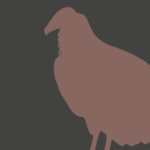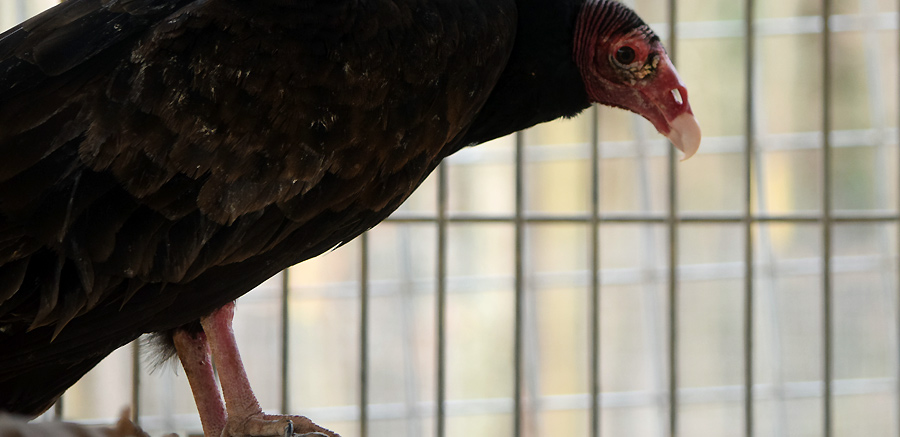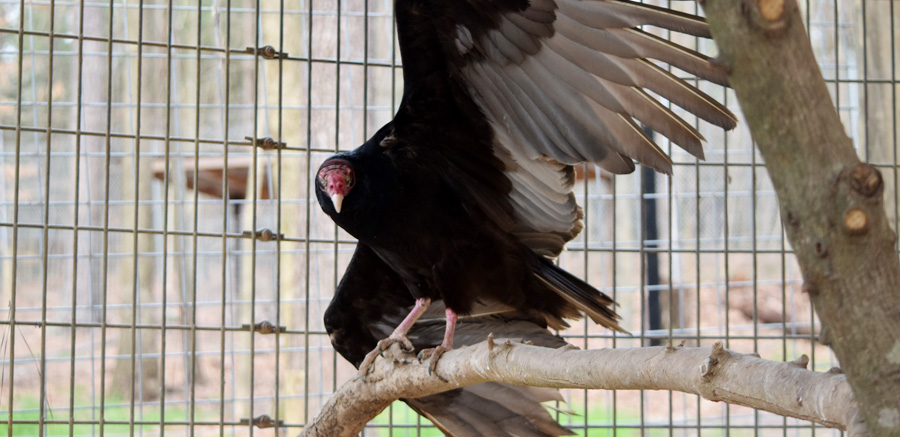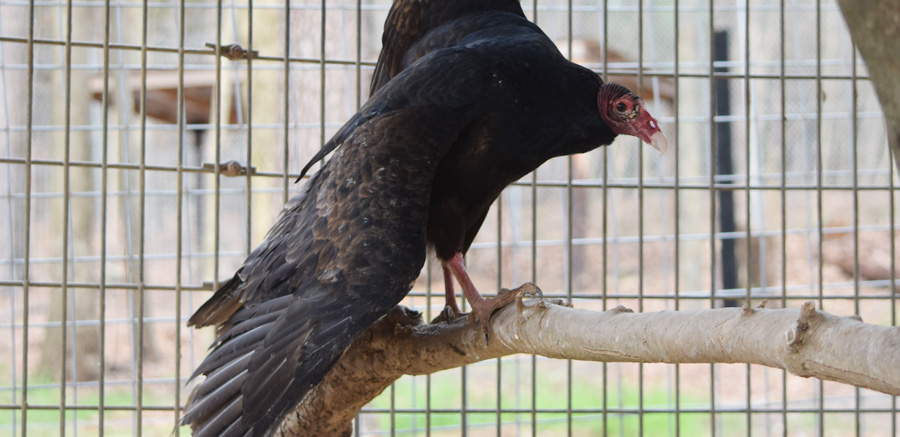
TURKEY VULTURE
While they lack a syrinx and make limited sounds, Turkey Vultures have the ability to smell unlike many birds of prey.
PROFILE
Carrion and Ziggy are still very shy around people. The keepers are working with them to acclimate to be near people and trusting humans. Standing under or too close may prompt them to attempt to fly. Both of our turkey vultures have wing deformities that they were either born with or endured in the wild.
OVERVIEW
CONSERVATION STATUS
Least Concern
AVERAGE SIZE
Compared to a 6′ Man
AVERAGE WEIGHT
3 lbs
AVERAGE LIFESPAN
13 Years
DIET
Carnivore
REGIONS
North America
Found across North America, they are the most abundant vulture species. Commonly found in relatively open areas which provide nearby woods for nesting. It generally avoids heavily forested areas. It roosts on dead, leafless trees, and will also roost on man-made structures like water towers and poles. Though it may nest in caves, it does not enter them except during the breeding season.



APPEARANCE
Overall, the turkey vulture is black with brown along the edges of their feathers. An easy way to remember if what you’re looking at is a turkey vulture or a black vulture is the color of its head. Adult turkey vultures have a red head, like the red throat of a turkey! Young turkey vultures have dark heads. Looking up at a flying turkey vulture, they are large with a relatively long tail. The underside of their wings are two-toned black with white edges and pronounced “fingers” at the tips. Their bills are relatively short, hooked and ivory in color. Their legs are dark to pinkish in color.
CHARACTERISTICS
It is unique among vultures in that it finds carrion by smell as well as by sight. Rarely they will feed on plants, insects and other invertebrates. They roost in groups but will break away on their own during the day to look for food. Mating season begins in early spring. Eggs are laid in protected areas (no nests) on cliffs or in caves, rock crevices, burrows, hollow trees or in a thicket. One to three cream-colored eggs are incubated by both parents for 30 to 40 days. Chicks are hatched and rely heavily on parents who feed them by regurgitating food for them. After two to three months the chicks will be able to fly on their own and leave their family group.


